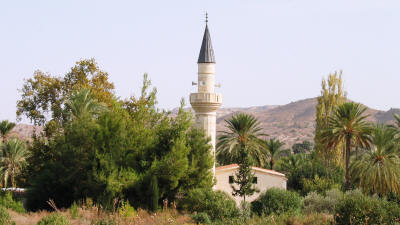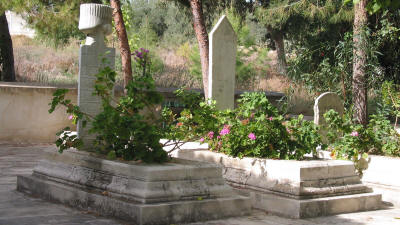Piri Osman Pasha Mosque
Lefke, North Cyprus
 |
| Piri Osman Pasha Mosque |
As you leave Lefke, you will see the Piri Osman Pasha Mosque on your left, hidden amongst some trees down a slope.
The building, also known as Minareli Mosque, Orta Mosque and Yukari Mosque at various times, dates back to the Byzantine period, and was originally a church, although the actual date of construction is not known.
After Arab raids in the 10th century, the church was converted into a mosque, but it fell into disrepair till the Ottomans took over the island in 1571.
One of the Viziers of Sultan Sulyman the Magnificent, on a visit to Lefke, spotted the neglected mosque and rebuilt it, naming it after his grandfather, Piri Osman Pasha. The mosque is built in a typical local Ottoman style, having three arches in front of it and five arches inside.
 |
| Ottoman Graves |
In the garden of this mosque, you will find the grave of Vizier Osman Pasha who died in 1839. Mystery surrounds his death. In 1839, he arrived in Cyprus in order to collect taxes from the island. He was met at the port by beautiful Greek girls who presented him with flowers.
After the greeting, he went to stay in Nicosia where he was taken ill. Doctors advised him to move to Lefke where the weather would be good for his health. Even though he took their advice, nine days after arriving in Lefke, he was dead. Some say the flowers he was given at the harbour were poisoned. Others believe that someone was putting poison in his coffee. Whatever the truth, the end result was the same.
His tomb was designed and built in Izmir by his wife who later settled in Lefke. It is one of the best examples of an Ottoman tomb, and its artwork includes flowers and trees.
A second, though less spectacular, tomb in the garden is that of Hussein Agha. He is reputed to have brought water to Lefke, building aqueducts to take it to other towns in the area.
See the location on Google maps
Back to Lefke index.